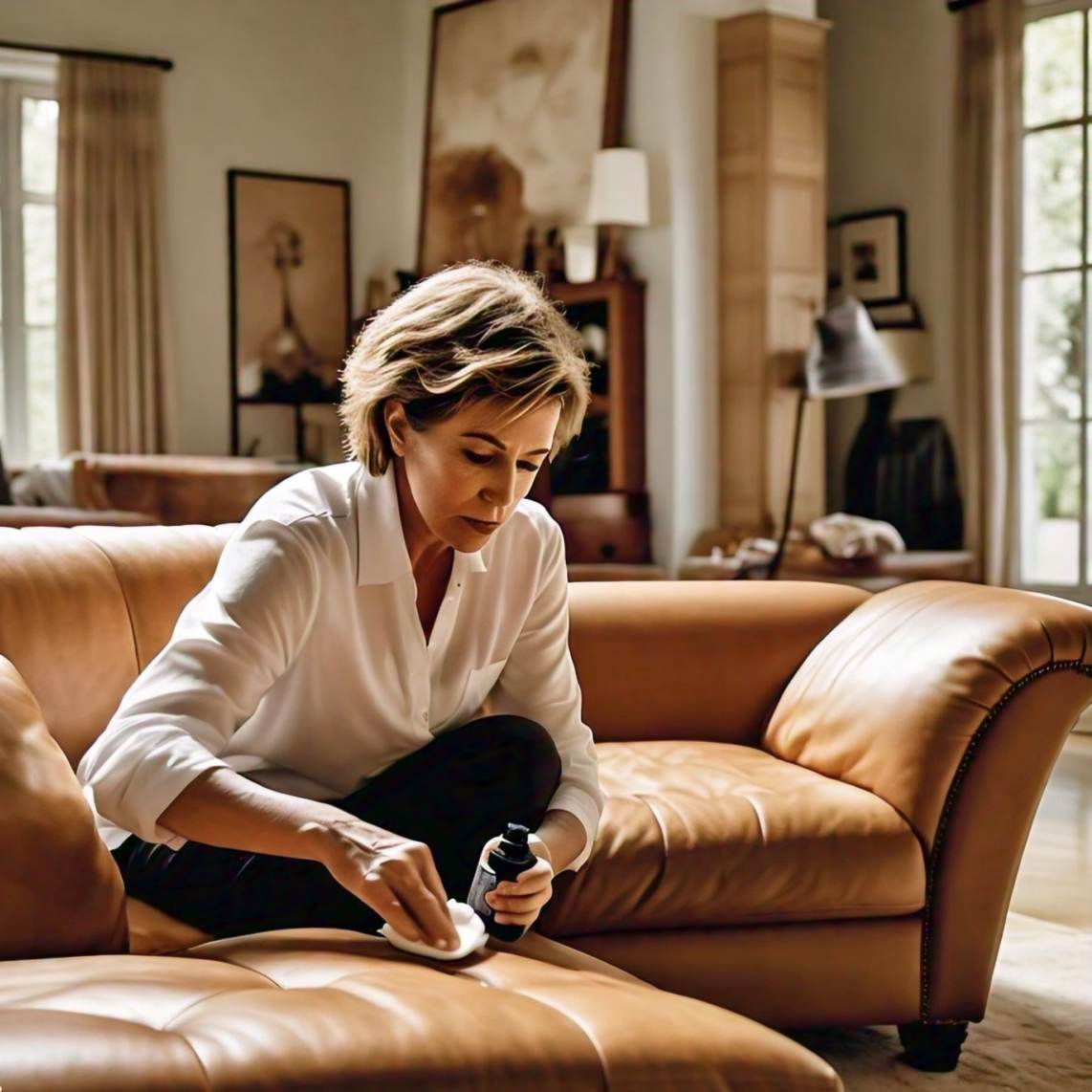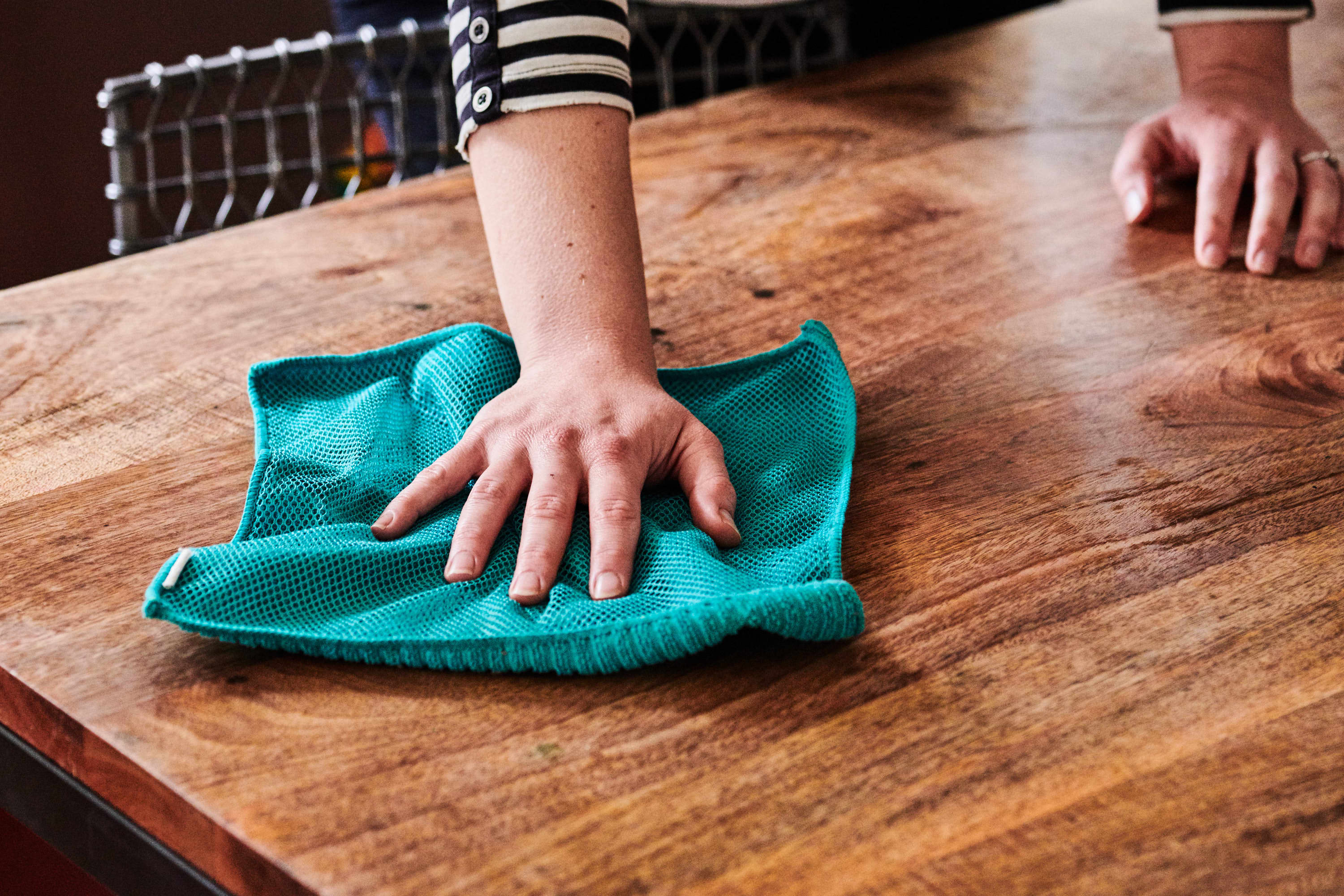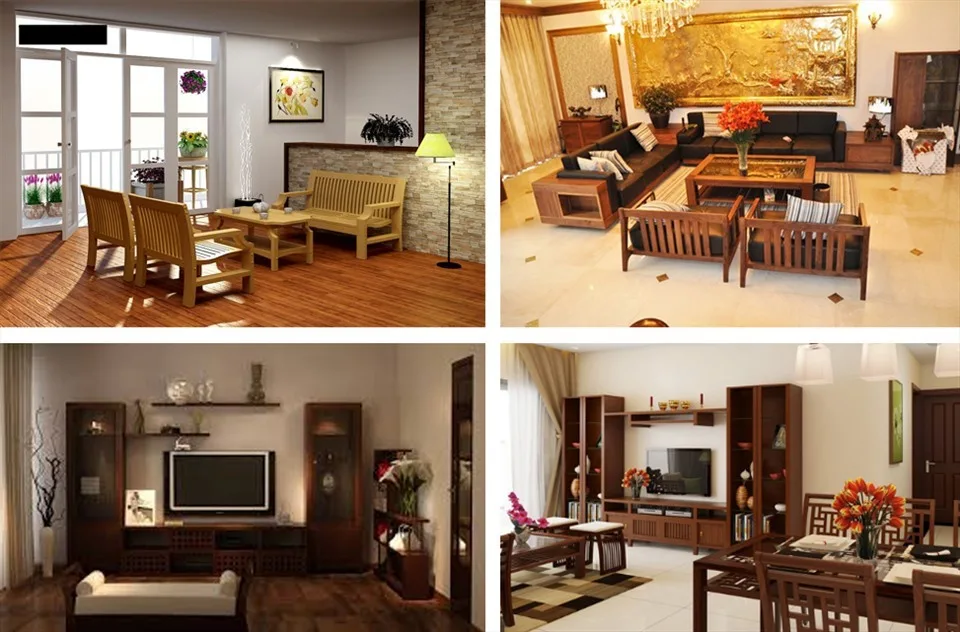News
How to Maintain and Clean Furniture to Keep It Looking Like New
How to Maintain and Clean Furniture to Keep It Looking Like New
In modern living spaces, furniture serves not only functional purposes but also plays a key role in enhancing the aesthetic appeal and character of your home. Over time, items such as tables, chairs, sofas, cabinets, beds, and dining sets can accumulate dust, scratches, and discoloration if not properly maintained. Knowing the right ways to maintain and clean furniture ensures that your pieces retain their beauty and longevity for years to come.
In this article, we will provide detailed guidance on keeping your furniture looking like new, covering different materials including wood, metal, leather, fabric, and plastic, as well as useful tips to make cleaning efficient without causing damage.
General Principles for Furniture Care

Before diving into material-specific advice, it is important to understand some basic principles of furniture care:
Keep the Space Clean
A clean and well-ventilated environment is essential for preserving your furniture. Regularly dusting, wiping surfaces, and preventing direct contact with dirt will minimize the risk of scratches and stains.
Avoid Direct Sunlight
Sunlight can cause fading, cracks, and reduced longevity of many materials. For wood, leather, and fabric, place furniture away from direct sunlight or use curtains to control light intensity.
Control Humidity
Excessive or very low humidity can damage wood and leather furniture. Maintaining an ideal temperature and humidity level helps preserve shape and quality while preventing warping, swelling, or mold growth.
Caring for Wooden Tables and Chairs

Wooden furniture is common and often heavily used, making proper care essential.
Daily Cleaning
- Use a soft cloth or microfiber cloth to remove dust.
- Avoid harsh chemicals or acidic cleaners, which can damage the finish.
- For stubborn stains, use a solution of warm water and mild soap, wiping gently and then drying with a soft cloth.
Maintaining Natural Luster
- Apply wood polish or wax periodically to maintain shine and protect the surface.
- Wipe along the grain to preserve the wood’s natural texture and appearance.
Protecting Against Physical Damage
- Use felt pads or coasters under table and chair legs to prevent floor scratches and reduce wobbling.
- Avoid placing heavy or sharp objects directly on surfaces to prevent dents and scratches.
Caring for Leather Sofas and Chairs
Leather furniture offers luxury and durability, but proper care is required to maintain its quality.
Daily Cleaning
- Dust regularly with a soft, dry cloth.
- For minor spills, wipe gently with a damp cloth and mild soap.
- Avoid harsh chemicals or alcohol-based cleaners to prevent cracking or fading.
Periodic Maintenance
- Use leather conditioners to keep the surface supple and prevent drying.
- Inspect stitching and seams periodically to catch small damages early.
Protecting Against Heat and Sun
- Keep leather away from heaters, radiators, or direct sunlight to avoid shrinkage or discoloration.
Caring for Fabric Upholstery
Fabric furniture provides comfort and warmth, but can attract dust and stains more easily.
Regular Cleaning
- Vacuum with a soft brush attachment to remove dust and debris.
- For stains, use mild soap or fabric cleaner, and allow the furniture to air dry.
Protecting Fabric
- Use chair covers or throws to reduce wear and exposure to dirt.
- Avoid direct sunlight to prevent fading of colors.
Maintaining Shape and Softness
- Fluff cushions regularly to maintain elasticity and shape.
- Check seams and padding periodically for signs of wear.
Caring for Metal Furniture
Metal furniture is durable but prone to rust if exposed to moisture.
Cleaning Metal
- Wipe dust with a soft cloth and mild detergent.
- For rust, use fine sandpaper and protective coatings to restore the surface.
Preventing Scratches
- Avoid dragging metal furniture across hard floors.
- Use felt pads under legs to reduce scratching on floors and surfaces.
Protecting Against Moisture
- Avoid placing metal furniture in damp areas like bathrooms or outdoor balconies.
- Consider a dehumidifier in humid environments to extend furniture life.
General Furniture Care Tips
- Establish a regular cleaning schedule to maintain appearance and longevity.
- Use appropriate cleaning products for each material to prevent damage.
- Avoid placing heavy or sharp items directly on surfaces.
- Control light and humidity to preserve colors and structural integrity.
Conclusion: Keeping Furniture Looking Like New
Proper maintenance and cleaning of furniture extends its lifespan and keeps your home looking fresh and elegant. From wooden tables and chairs, leather sofas, fabric seating, to metal furnishings, each material requires specific care techniques. By following basic principles, implementing regular cleaning routines, and protecting furniture from environmental damage, you can keep your pieces looking like new for years.
Start implementing these furniture care tips today to ensure your living space remains clean, stylish, and well-maintained. Well-cared-for furniture not only enhances aesthetics but also protects your long-term investment in your home.
Advanced Techniques for Maintaining and Cleaning Furniture
Maintaining your furniture goes beyond basic cleaning and dusting. Advanced techniques focus on prolonging durability, preserving aesthetics, and adapting care strategies to the specific materials and uses of each piece. By combining preventive care, material-specific cleaning, and smart organization, you can ensure that your furniture continues to look like new for years to come.
Preventive Measures: Protecting Furniture Before Damage Occurs
One of the most effective strategies in furniture maintenance is prevention. By anticipating common sources of wear and tear, you can minimize the need for heavy cleaning or repairs later.
Using Protective Covers and Liners
Protective covers for sofas, chairs, and tables can prevent stains, scratches, and sun damage. For instance:
- Slipcovers for sofas: These provide a removable, washable layer, ideal for families with children or pets.
- Table runners and mats: Protect dining and coffee tables from spills, hot dishes, and scratches.
- Cushion protectors: Simple plastic or fabric protectors prevent moisture or food stains on upholstered chairs.
These small additions act as a first line of defense, keeping your furniture looking pristine with minimal effort.
Proper Placement and Environment
Where furniture is placed can significantly affect its longevity. Consider the following:
- Avoid direct sunlight: Excessive UV exposure can cause fading, cracking, and weakening of materials like wood, leather, and fabric.
- Maintain optimal humidity: Too much moisture can warp wood or cause mold on fabrics, while overly dry conditions can lead to cracking in wood and leather.
- Temperature control: Extreme heat can damage finishes and adhesives used in furniture construction.
Proper positioning combined with environmental control protects furniture from early deterioration.
Material-Specific Deep Cleaning
While daily cleaning removes surface dust, periodic deep cleaning is essential to maintain the integrity and appearance of furniture.
Wood Furniture
- Polishing and oiling: Use a high-quality wood polish or oil every few months to restore shine and protect the surface from drying.
- Scratch repair: Minor scratches can be treated with colored wax sticks, furniture markers, or natural remedies like walnut rubs for light scratches.
- Avoid excess water: Never saturate wood surfaces, as this can cause swelling or staining.
Leather Furniture
- Conditioning: Leather should be conditioned every 3–6 months using a specialized leather conditioner to keep it supple and prevent cracks.
- Stain treatment: For oil-based stains, apply a small amount of cornstarch or talcum powder and let it absorb before wiping clean.
- Vacuuming crevices: Use a soft brush vacuum attachment to remove dust and dirt from seams and stitching.
Fabric Upholstery
- Steam cleaning: For deep stains and odor removal, a steam cleaner can sanitize fabric without harsh chemicals.
- Spot cleaning: Address spills immediately using a mild detergent solution and a soft cloth, blotting rather than rubbing to avoid fiber damage.
- Rotation: Rotate cushions and pillows regularly to ensure even wear and maintain shape.
Metal Furniture
- Rust prevention: Wipe surfaces regularly with a damp cloth, then dry thoroughly. Apply a protective coating if rust appears.
- Polishing: Use a metal polish suitable for the specific type (stainless steel, brass, aluminum) to maintain shine.
- Avoid abrasive tools: Scrubbing with hard brushes can scratch the surface and remove protective coatings.
Organizing Furniture for Longevity
Proper organization can prevent accidental damage and reduce wear.
Avoid Overloading
- Do not place excessively heavy items on shelves, tables, or chairs beyond their weight limits.
- Distribute weight evenly to prevent warping or structural strain, especially for wood or composite furniture.
Strategic Use of Space
- Maintain walkways and clearance around furniture to prevent bumping and scratches.
- For movable items like chairs and side tables, ensure there is enough space to shift without hitting walls or other objects.
Regular Inspections
- Check joints, screws, and fasteners periodically to ensure structural integrity. Tighten loose connections to avoid damage over time.
- Look for early signs of wear or material degradation and address them immediately to prevent worsening.
Maintenance for Outdoor Furniture
Outdoor furniture faces unique challenges from sunlight, rain, and temperature changes, requiring extra care.
Wood Outdoor Furniture
- Apply waterproof sealant to protect against moisture.
- Store cushions and covers indoors when not in use to prevent mildew and fading.
- Clean with mild soap and water, avoiding harsh chemicals that may strip finishes.
Metal Outdoor Furniture
- Use rust-resistant coatings or paint to prolong life.
- Cover furniture during storms or winter months to minimize corrosion.
Plastic and Synthetic Materials
- Wash with soap and water regularly to remove dirt and prevent discoloration.
- Avoid prolonged sun exposure to reduce brittleness or fading.
Eco-Friendly Cleaning Practices
Modern furniture care can also be environmentally conscious. Using natural cleaning agents and minimizing chemical usage helps protect both your furniture and the environment.
- Vinegar and baking soda: Effective for removing stains and odors from wood and fabric.
- Lemon oil: Restores shine to wood surfaces naturally.
- Microfiber cloths: Reduce the need for disposable wipes, lowering waste.
These approaches maintain furniture quality while promoting sustainable living.
Daily Habits to Keep Furniture Like New
- Dust daily to prevent accumulation that can cause surface scratches.
- Wipe spills immediately to avoid stains setting into fabrics or wood.
- Rotate cushions and rugs to distribute wear evenly.
- Use coasters and placemats on tables to protect surfaces from liquids and heat.
Consistently practicing these small daily habits dramatically extends the lifespan of furniture.
Conclusion: A Comprehensive Approach to Furniture Care
Maintaining furniture like new requires a combination of daily cleaning, material-specific care, preventive measures, and smart organization. By understanding the strengths and vulnerabilities of each material—wood, leather, fabric, metal, or plastic—you can apply the right techniques to preserve beauty and functionality.
Regular inspections, deep cleaning, and adopting eco-friendly practices ensure that your furniture remains durable, aesthetically pleasing, and comfortable for years. With thoughtful care and maintenance, you can enjoy a home environment where every piece of furniture continues to look and feel as good as the day you bought it.
Start applying these strategies today to keep your furniture in pristine condition, protect your investment, and enjoy a beautiful, welcoming living space that lasts.
Advanced Strategies for Extending the Life of Your Furniture
Maintaining furniture so that it always looks fresh and new is not just about surface cleaning; it involves a comprehensive approach that combines preventive care, proper handling, and thoughtful placement. By applying advanced strategies tailored to each material, you can significantly extend the life of your furniture and ensure it continues to provide comfort, functionality, and aesthetic appeal.
Strategic Placement: Protecting Furniture from Environmental Stress
The location of your furniture plays a crucial role in its longevity. Environmental factors such as sunlight, temperature, and humidity can drastically affect the durability and appearance of different materials.
Avoid Direct Sunlight
- Prolonged exposure to sunlight can cause fading, discoloration, and cracking, particularly for wood, leather, and fabric furniture.
- Use curtains, blinds, or UV-protective window films to control the amount of sunlight that reaches your furniture.
Temperature and Humidity Control
- Excessive humidity can lead to warping, swelling, or mold on wood and fabric surfaces.
- Extremely dry conditions can cause cracks and brittleness in wood and leather.
- Using humidifiers or dehumidifiers helps maintain optimal conditions, reducing stress on furniture materials.
Proximity to Heating and Cooling Sources
- Avoid placing furniture too close to radiators, heaters, or air conditioners, as fluctuating temperatures can accelerate material degradation.
- For leather and wood, temperature extremes can cause shrinkage, cracks, and finish damage.
Proper placement ensures that your furniture is protected from environmental stress, which is a critical factor in keeping it looking new for years.
Rotating and Repositioning Furniture
Evenly distributing wear across furniture surfaces is an effective way to maintain their condition.
Regular Rotation
- Cushions, mattresses, and upholstered seating benefit from regular rotation to prevent uneven wear and sagging.
- Rotate items every few months to maintain shape, elasticity, and comfort.
Repositioning Furniture
- Rearranging furniture periodically can reduce pressure points on carpets and flooring, minimizing indentations.
- It also prevents prolonged exposure of one side of furniture to direct sunlight, which can lead to uneven fading.
These practices ensure that no single part of your furniture bears the brunt of environmental or physical stress.
Protecting Surfaces with Advanced Accessories
Using specialized accessories can prevent scratches, stains, and other forms of damage, preserving the finish and integrity of furniture.
Table and Desk Protection
- Tempered glass or acrylic covers protect wooden surfaces from scratches, spills, and heat damage.
- Coasters, placemats, and trivets prevent water rings, hot marks, and stains.
Chair and Sofa Protection
- Removable slipcovers not only protect fabric furniture from spills and dirt but also allow for easy washing.
- Leather protectors and conditioners prevent cracking, dryness, and color fading.
- Armrest and leg pads reduce friction and wear, extending the life of upholstered chairs and sofas.
Metal Furniture Care
- Apply anti-rust coatings or wax on metal surfaces to prevent corrosion.
- Use felt pads under legs to avoid scratching floors and reduce vibration-induced wear.
By using these advanced accessories, you create a protective barrier between furniture and everyday hazards.
Material-Specific Deep Maintenance
To maintain furniture in top condition, it is crucial to understand the deep maintenance required for each material.
Wood Furniture
- Apply wood oils or polishes periodically to nourish the wood and restore shine.
- Repair minor scratches with wood filler, wax sticks, or natural remedies like walnut or olive oil.
- Avoid over-wetting surfaces during cleaning to prevent swelling, warping, or water rings.
Leather Furniture
- Use conditioners to maintain elasticity and prevent cracks, especially in high-use areas.
- Clean spills immediately with a soft damp cloth to prevent stains from setting.
- Vacuum seams to remove dust and debris that could cause abrasion.
Fabric Furniture
- Use steam cleaning periodically for deep stains and to remove embedded dust.
- Apply stain-resistant sprays for added protection against spills.
- Rotate cushions and pillows regularly to maintain even wear and shape.
Metal Furniture
- Regularly inspect for rust or corrosion; treat immediately with protective coatings.
- Avoid abrasive cleaning tools that can scratch or remove protective layers.
- Wipe dry immediately after cleaning to prevent moisture-related damage.
Eco-Friendly Furniture Care
Modern furniture maintenance can be both effective and environmentally friendly.
Natural Cleaning Agents
- White vinegar and baking soda are safe and effective for cleaning wood and fabrics.
- Lemon oil restores shine to wooden surfaces naturally.
- Microfiber cloths reduce the need for disposable cleaning materials, lowering waste.
Reducing Chemical Use
- Choose non-toxic, biodegradable cleaners to protect your furniture and indoor air quality.
- Avoid harsh chemical sprays that may damage finishes or introduce harmful fumes.
Eco-friendly practices help protect your furniture while supporting a healthy living environment.
Organizing Furniture for Longevity
Well-organized furniture spaces reduce wear and tear while making maintenance easier.
Avoid Overloading
- Do not place overly heavy objects on chairs, tables, or shelves beyond recommended weight limits.
- Distribute weight evenly to prevent warping, cracking, or bending.
Maintain Clearance
- Leave sufficient space around furniture to prevent accidental bumps and scratches.
- Ensure chairs and tables can be moved without hitting walls or other objects.
Inspect Regularly
- Check joints, screws, and fasteners to ensure structural integrity.
- Address early signs of wear or damage promptly to prevent further deterioration.
Proper organization ensures furniture maintains functionality, stability, and visual appeal.
Daily Habits for Keeping Furniture Like New
Consistent daily practices significantly extend the life of your furniture:
- Dust daily with a soft cloth to prevent buildup.
- Clean spills immediately to avoid permanent stains.
- Rotate cushions and rugs to ensure even wear.
- Use protective accessories such as coasters, mats, or covers.
Integrating these habits into your routine prevents small issues from escalating into costly damage.
Conclusion: A Holistic Approach to Furniture Care
Keeping furniture looking like new requires more than occasional cleaning—it demands a comprehensive approach. By combining preventive measures, material-specific care, deep cleaning, protective accessories, and smart organization, you can ensure your furniture maintains its beauty and functionality for years.
Each material—whether wood, leather, fabric, metal, or plastic—has unique maintenance requirements. Understanding these needs, implementing eco-friendly practices, and incorporating daily care routines ensures that your investment in furniture remains valuable, comfortable, and visually appealing.
Start applying these strategies today to protect your furniture, preserve your home’s aesthetics, and enjoy a living space that stays fresh, clean, and inviting. A well-maintained interior not only enhances the home environment but also reflects care and attention to quality in every detail.
Seasonal Maintenance: Adapting Care to Different Times of the Year
Furniture requires seasonal attention to remain in optimal condition throughout the year. Different seasons bring distinct environmental challenges that can affect the durability and appearance of your pieces. By adjusting care routines to seasonal changes, you can prevent damage and extend the life of your furniture.
Spring and Summer Care
Spring and summer often bring higher humidity and increased sunlight, which can impact wood, fabric, and leather furniture.
Humidity Control
- Use a dehumidifier in areas with high moisture to prevent wood swelling, mold growth on fabric, and rust on metal furniture.
- Keep wooden furniture away from damp areas like bathrooms or kitchens during humid months.
Sunlight Protection
- Rotate furniture periodically to avoid uneven fading from sunlight exposure.
- Consider UV-protective window films or curtains to reduce the impact of strong sun rays on delicate materials.
Deep Cleaning
- Summer is a good time for a thorough cleaning of fabric upholstery using steam cleaning or gentle detergent solutions.
- Polish wooden surfaces to maintain shine, and apply conditioners to leather furniture to prevent dryness caused by fluctuating indoor temperatures.
Fall and Winter Care
Fall and winter often bring lower humidity and colder temperatures, which can negatively affect furniture, especially wood and leather.
Heating Precautions
- Avoid placing furniture near radiators or heating vents, as extreme heat can dry out wood and leather, causing cracks and brittleness.
- Maintain a consistent room temperature to reduce material stress.
Dust and Debris Management
- During colder months, people often spend more time indoors, increasing dust accumulation.
- Vacuum or wipe down furniture weekly to prevent dust settling into fabrics and seams.
Protective Measures
- Use slipcovers or protective throws for fabric sofas during extended indoor use.
- Apply wood oil or leather conditioner before winter to protect against dry indoor air.
Benefits of Seasonal Adaptation
Adjusting your furniture care routine according to the seasonal environment ensures that:
- Materials remain stable and durable throughout the year.
- Furniture retains its appearance and comfort, avoiding warping, cracking, or fading.
- Cleaning and maintenance efforts are more effective, reducing the risk of long-term damage.
By incorporating seasonal maintenance into your furniture care regimen, you can safeguard your investment and ensure that your home continues to look fresh, elegant, and welcoming all year round. This proactive approach not only preserves beauty but also enhances functionality, keeping your furniture comfortable and reliable for daily use.

